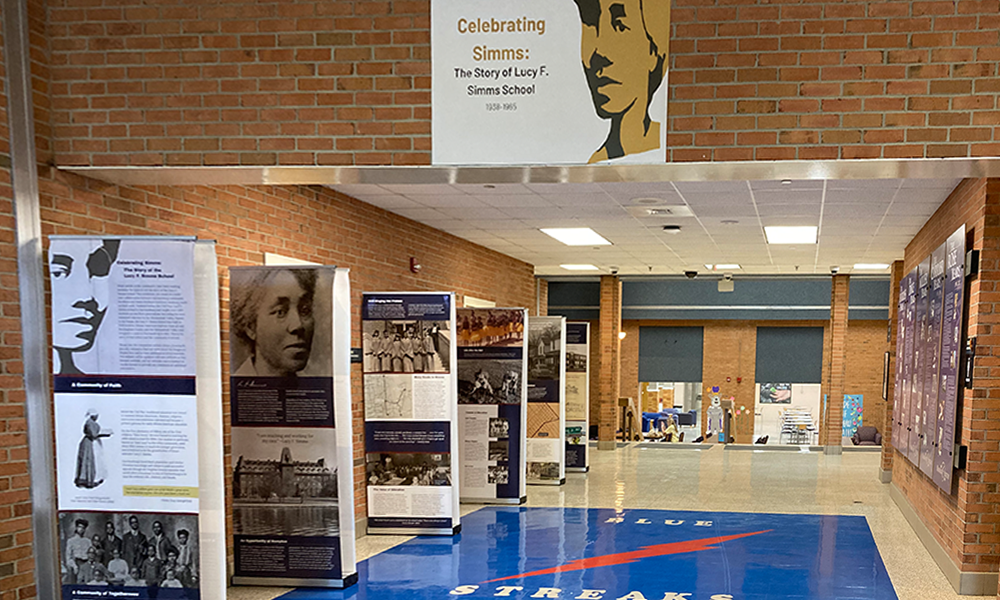Celebrating Simms
Lucy F. Simms School’s Exhibition at the College of Education
College of Education
SUMMARY: The Celebrating Simms mobile exhibit display has been presented to the College of Education for display.
For many years, James Madison University students have collaborated with members of the Shenandoah Valley Black Heritage Project to learn and promote the stories of local African American Civil War soldiers. Their work led to the creation of an exhibit honoring the life of educator and community leader Lucy F. Simms. Recently, the Celebrating Simms mobile exhibit display was presented to the College of Education for display.
Lucy Simms was born into slavery in 1856. Emancipated slaves did not have access to formal education in Harrisonburg until 1870, at which time Simms was 14. She then went on to earn a teaching certificate from Hampton Institute in Virginia in 1877. Miss Simms then returned to Harrisonburg, where she taught over 1800 African American students across three generations from all throughout Rockingham County and surrounding areas until her death in 1934. The Effinger Street School. Rebuilt in 1938, was renamed in her honor the following year.
During segregation, many of the towns around Harrisonburg were known as “sundown towns,” because white communities refused to let African Americans into their cities after dark. Harrisonburg was friendlier than its neighbors, making it easier for African American families to establish a community.
Lucy F. Simms began her 56-year career as a teacher in 1877 at Athens Colored School, afterward known as Zenda, an African American community northeast of Harrisonburg. She brought her excitement and dedication to all three of the institutions where she served. She taught in the basement of the Harrisonburg Catholic Church in Harrisonburg. The increased number of children led to the establishment of Effinger Street School, where Miss Simms and her half-brother, Ulysses Grant Wilson, taught for the next 52 years.
Miss Simms was a knowledgeable and kind educator who also served as a surrogate parent to her students. Because most of her students’ parents worked, she assisted them in getting ready for school by combing and brushing their hair. Miss Simms was also an active member of the Harrisonburg community. In 1914, she was elected president of the Colored Teachers’ Association, which had just been established. Likewise, she was a choir member of the John Wesley Methodist Church and Sunday School teacher, as well as a committee member of the “Colored Division” of the United War Work Campaign, during World War I.
Teachers at the Lucy F. Simms School were highly respected members of the community who worked hard to ensure that their students excelled in a variety of areas. Teachers encouraged teamwork, courtesy, and joy in addition to academics. At the Lucy F. Simms School, the focus was on more than just getting good grades; it was also about creativity, honesty, and citizenship.
If you would like to learn more about Lucy F. Simms School, visit the exhibition at the College of Education at James Madison University.
